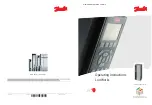
Ozone Solutions, Inc
Advanced Ozone Technology
November 19, 2007
INSTALLATION MANUAL
OZV-20DG OZONE GENERATOR
Introduction: OZV-20DG ozone generator can not operate on dry air feed gas, it
is
designed and it can operate solely on oxygen sources that are capable of supply of
5 LPM (10 SCFH) of oxygen flow.
1. INSTALLATION CONCERNS.
A.1.
Ozone is a very strong oxidant. Only ozone resistant materials may be used in
contact with ozone gas.
A.2.
Oxygen generators release moisture and nitrogen gas into the ozone room. In
addition also tiny amounts of ozone are generated around the high voltage
terminals. Both will accumulate over a time, exceeding the specified level of 85%
R.H. or 0.08 ppm of ozone, and cause the equipment failure. Proper ventilation is
essential.
In many states proper ventilation is required by law. The rate of
ventilation must be at least 3 m
3
/min (120 CFM).
A.3. The air for the ozone room must be free of dust, oil, acid and other volatile
vapors. All these elements would otherwise shorten the life of the high voltage
circuits. Also the oxygen generator would be disabled very fast, namely from oil
vapors. Oil vapors may be present where a backup power generator is in place.
A.4.
The equipment must be protected from splashing water, rain, sun, mist and
Relative Humidity above 85%. For the best performance the temperature
must not exceed 30
°
C. Install a small A/C unit in-line with the air ventilation
system to decrease R.H. and temperature below the above levels.
A.5.
The ozone generator must be protected from vacuum airlock
B. INSTALLATION.
B.1.
Install screws onto the wall, or onto a designer-frame and hook-up the ozone
generator. Allow for easy access to the bottom back for connecting the tubes, to
the right site for the cooling-air intake, and to the left side for the cooling air
discharge.
B.2.
Every ozone system must be equipped with vacuum-breaking Balance
Barometer, installed between the ozone generator and vacuum-source MIC






















